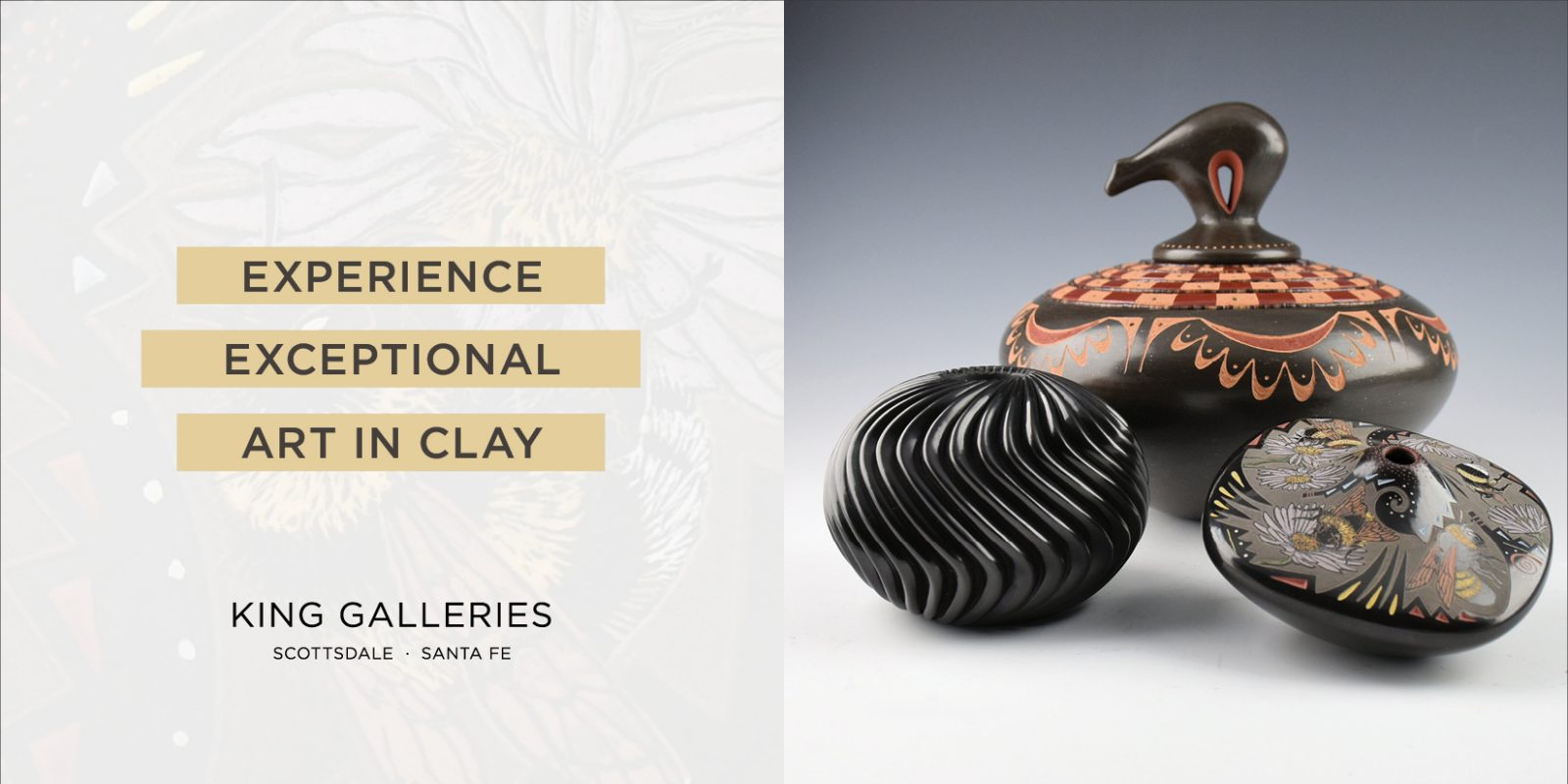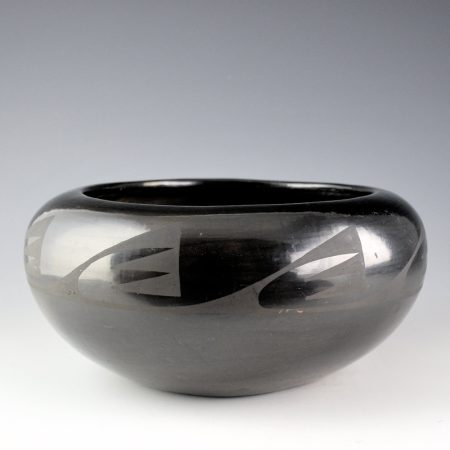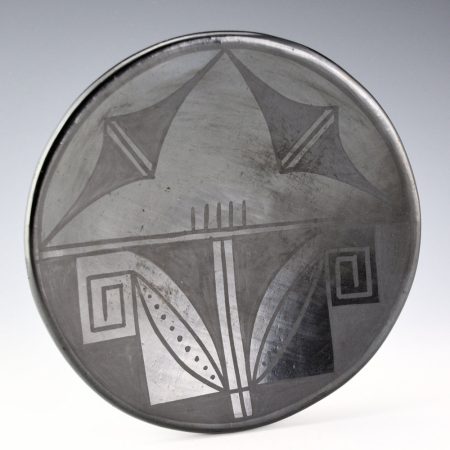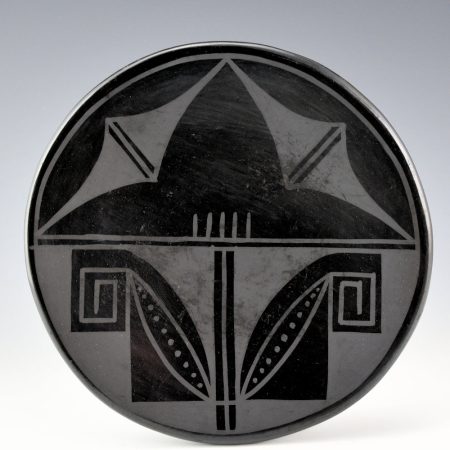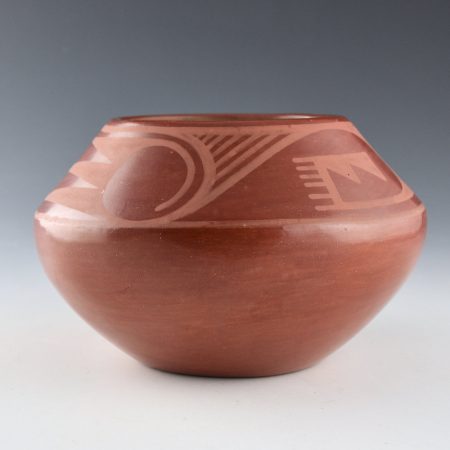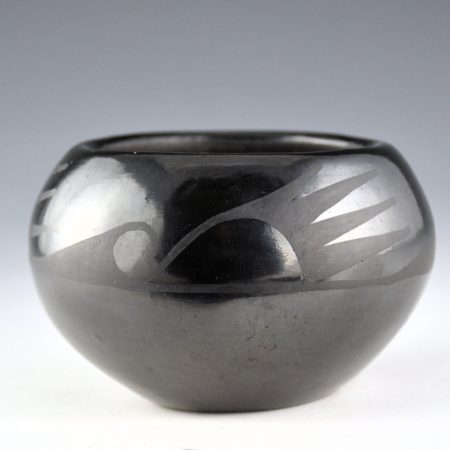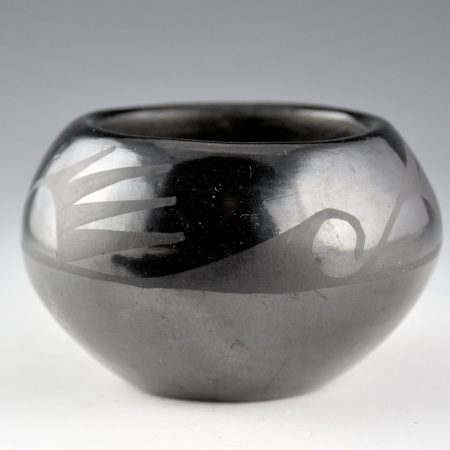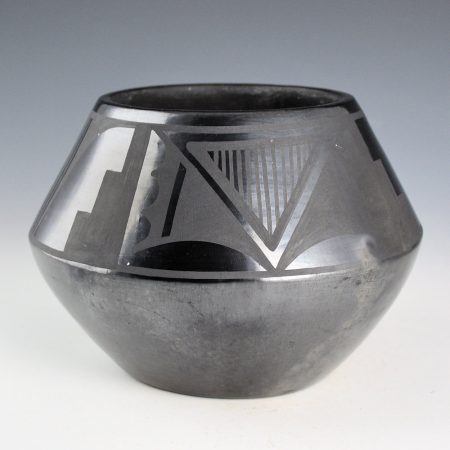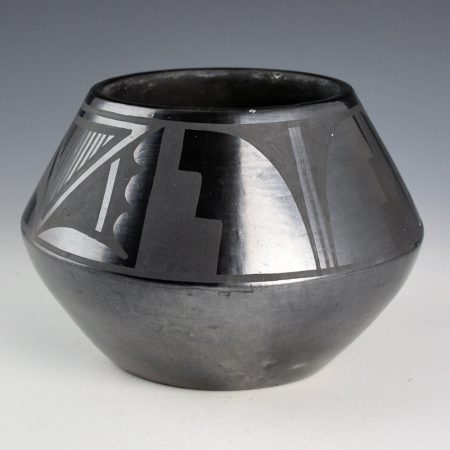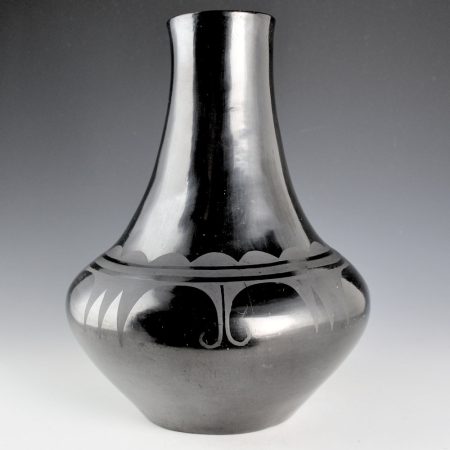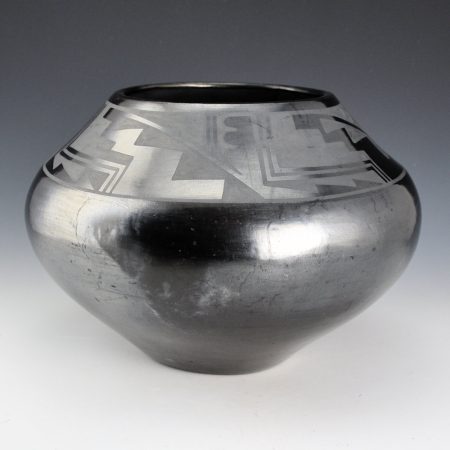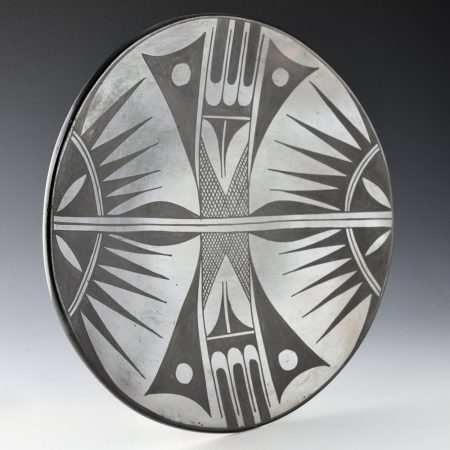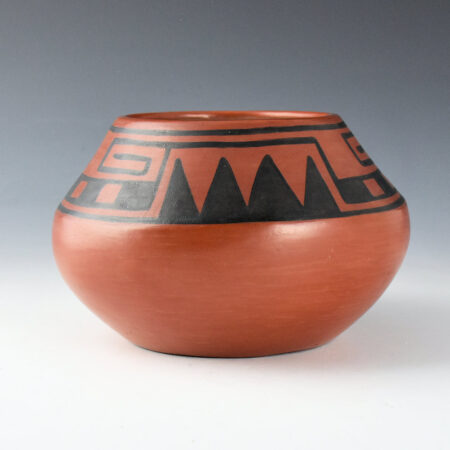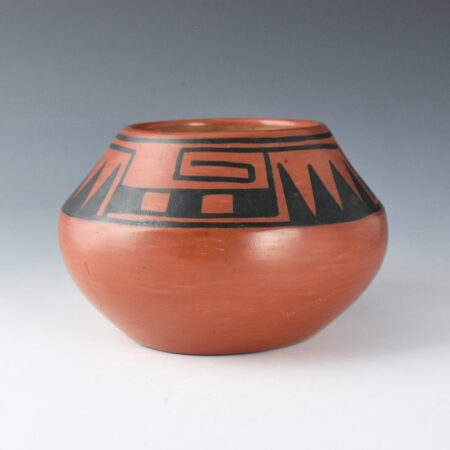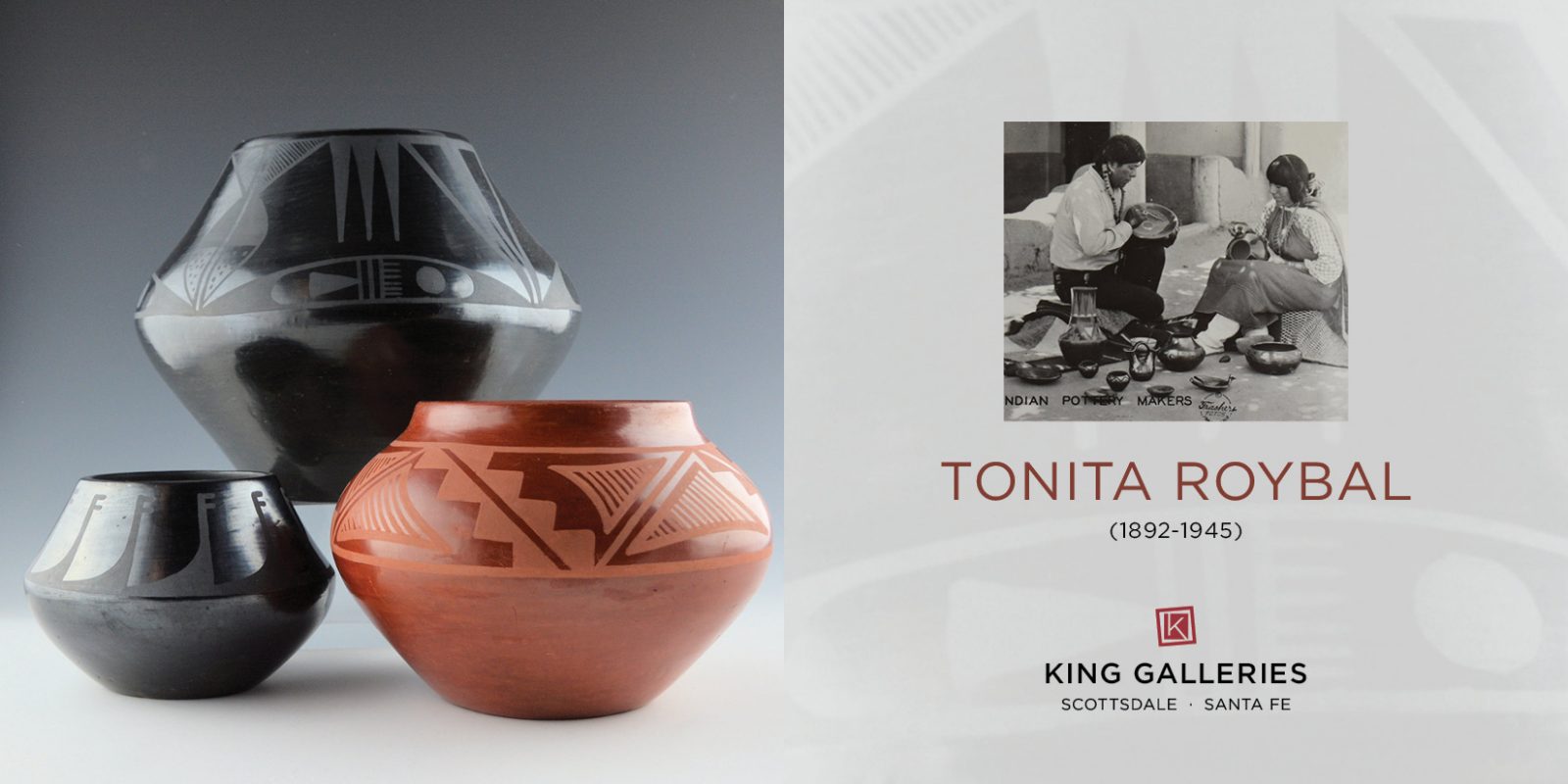
Tonita Roybal (1892-1945)
Tonita Roybal (1892-1945) has been called, “One of the finest potters of the twentieth century.” She learned to make pottery from her mother, Dominguita Pino Martinez (1860-1948). Her brother, Cresencio Martinez (1879-1918), married Anna Montoya (Maria’s sister). She was also an aunt to Santana Roybal, who later married Adam Martinez (Maria’s son). Tonita was married twice. Her first husband was Alfredo Montoya (1890-1913), and then in 1916, she married Juan Cruz Roybal (1896-1990). Among her descendants are JD Roybal (painter) and Margaret Lou Roybal-Gutierrez (potter).
Tonita began making pottery in 1909. Starting in 1917, Juan started to paint some of her pottery, and after 1930 he painted a majority of the pieces. When Tonita made the pottery and did the painting, these pieces were signed, “Tonita.” When she made the vessel, and Juan painted it, then they were signed, “Tonita and Juan.” Kenneth Chapman commented in a letter on the quality and value of her work at the time, “Tonita Roybal does equally fine work, and I may be able to get just what you want from her if Maria does not get back to work soon. Tonita won first prize for her oldfashioned red San Ildefonso ware, with decorations in black (black-on-red pottery). Her husband, Juan Cruz, runs Julian a close second in decorating pottery. She put a price of $12.00 each on jars 8″ in diameter and got it! It is hard on some of us poor ethnologists who have been encouraging it, but it has made an incredible difference in San Ildefonso life, and we are strong for it”.
Tonita’s mother was famous for her “black-on-red” style of pottery, and this was a style that Tonita quickly mastered. After 1920 and the advent of black-on-black pottery, Tonita invented the red-on-red technique with the white outlines. Both Tonita and Juan were fascinated by pre-historic pottery. Those designs and their influences can often be seen in their work. After 1913 she began, “combining the layout of Nampeyo’s Sikyatki Revival style with elements from Acoma and elsewhere.” By 1925 Tonita was at the peak of her career. Her early death in 1945 left only a small amount of creative and innovative work that still inspires us with a unique use of varied Native designs from pre-historic to regional influence.
Click Here to Learn More about Early San Ildefonso Potters!
